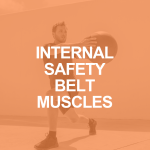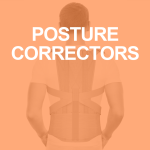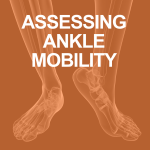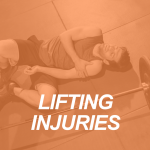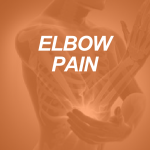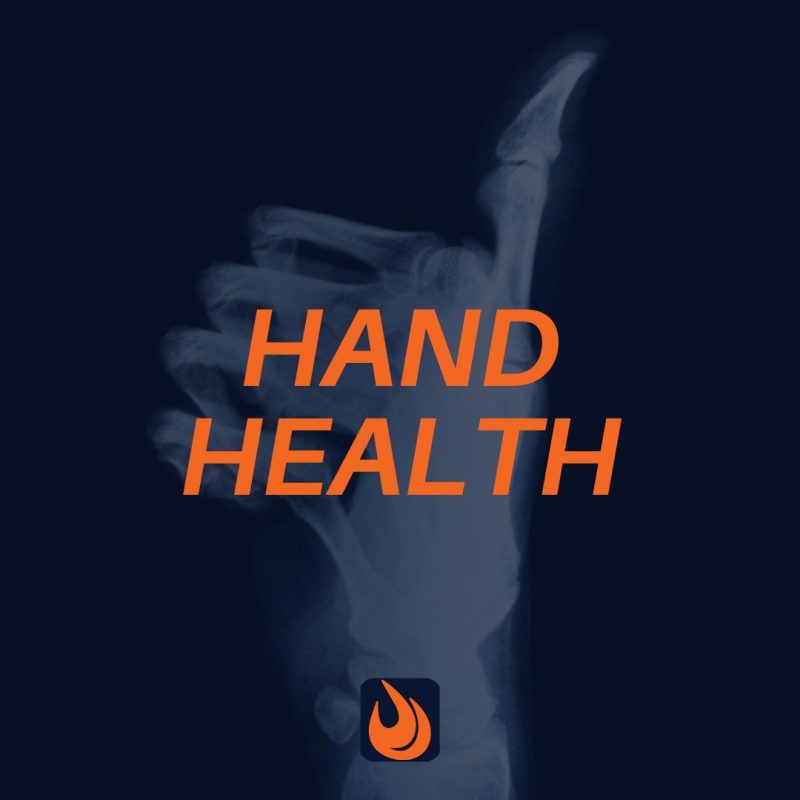
Hand health is certainly a topic that personal trainers need to have a firm grasp on (pun intended). Our carpal, metacarpal, and phalange bones, ligaments, tendons, and mini-muscles can make our hands function at work, exercise, and play. Our hands are true marvels of system complexity and function.
- Each human hand comprises 27 bones, 27 joints, 34 muscles, over 100 ligaments and tendons, plus many blood vessels and nerves.
It comes as little surprise that hand problems, disorders, and injuries can become real as client concerns or medical issues. Many CPTs have addressed this question, “Why does my hand hurt?” Or perhaps even, “Are my fingernails supposed to be this brittle?”
- Emergency Room/Department statistics show that hand “disorders” such as lacerations, blunt force trauma, and bone breakage account for at least 5% of all ED visits in the USA per year.
- Though statistically rare in our general population, repetitive stress conditions – like carpal tunnel syndrome (CTS) – can become chronic and activity-altering, particularly for adult, white women in certain professions. Covered health plan co-payments, and/or out-of-pocket expenses to mitigate CTS can be notable. If surgery is chosen for CTS treatment, the total cost is about $7,000.
- Half of adult Americans experience the wear and tear version of arthritis called osteoarthritis(OA), with a notable percentage that become chronic.
Hand and fingernail features may be manifests of unhealthy, yet treatable internal conditions. Granted, professional trainers are (usually) not medical diagnosticians, or physical therapists. Yet a CPT’s awareness of common hand disorders and notice of visual cues for fingernails and joints can help clients pursue active and pain-free activities of daily life (ADL).
- First, this handy article mentions prudent awareness and safety matters for CPTs and their clients with regard to hand health.
- Second, a review of visual cues of cutaneous surfaces and joints is made for professional advice to clients about nutrition and general health.
- Third, repetitive stress injuries and Carpal Tunnel Syndrome (CTS) realities are cited, along with arthritis, and tendinitis.
- And fourth, useful strength and flexibility exercises for client’s hands are cited before this article’s summary with key takeaways.
Potential Hand Injuries and Safety
Though it may seem counterintuitive, elite and high-performance athletes suffer more injuries than do weekend warriors and recreational athletes. Complacency can be a factor around heavy weights and apparatus, perhaps like a close encounter at a bench press rack and barbell interface. But more than likely, the risk goes up as opportunity does—the more you work out, the more chances for an injury you create. Those who perform dynamic front squats for hypertrophy and strength naturally experience more strain on the forearms, wrists, and hands.
Is a client’s forearm discomfort muscular inflammation or tendinitis? Is a wrist pain from overuse, a fall or hard landing sprained or fractured? Seemingly minor hand or wrist injuries need to be taken seriously. A hand, wrist, or thumb fracture could be a thin crack, a shattered digit, or a crushed bone.
The encouraging message for clients is that proper healing and alignment should allow ADLs (activities of daily life) to continue. If habilitation is ignored or delayed, the client’s ability to perform everyday activities, such as typing, writing, or buttoning a shirt, is challenged. Early treatment will also help minimize pain and stiffness from arthritis, tendinitis, a cyst, sprain, or breaks.
Cutaneous Clues
Select cutaneous, or skin, observations are made for awareness, rather than to sound medical alarms. Not every nail discoloration is linked to internal problems. Not every dry patch on a hand is pre-cancerous. Itchy, flaking, and crusting patches of skin may be dermatitis caused by dehydration or a micronutrient deficiency as you will soon read.
Backs of one’s hands are common areas for pre-cancerous abnormalities which may be colored red, tan, pink, brown or silvery. These pre-cancerous conditions are called actinic keratoses (AK), which may be up to an inch in diameter as flat, raised, crusty, or bumpy shapes. According to the Skin Cancer Association, about 1/6th of all Americans have single or multiple AKs. The key point is that some AKs may evolve into squamous cell cancers (SCC). Early recognition and proactive treatment are encouraged.
Knuckles can reflect prior joint damage, or current osteoarthritis (OA) features of swelling and abnormal alignment.
Nailing It
You do not need to be a medical professional to observe certain nail changes that suggest internal health problems in the liver, lungs, or heart. Both fingernails (when unpolished) and toenails reveal clues about overall health or unhealthy conditions.
Colored, rough, or rippled/ridged/pitted fingernails
First, you have probably seen unattractive, yellow-discolored, and thick “old person” nails as symptoms of topical and/or internal fungal infection. These are notable symptoms, as non-prescription treatments may not work over time. Oral antifungal drugs, application of medicated nail polish or cream, or nail removal may be needed in tough cases.
- In rare cases, yellow nails can indicate a more serious condition such as severe thyroid disease, lung disease, diabetes or psoriasis.
Then, white nails, or leukonychia, are partially or completely white in color. That abnormal white color could be the result of trauma, anemia, dietary deficiencies, heart or kidney disease, or even poisoning.
Nails with a bluish tint may mean the body isn’t getting enough oxygen. This could indicate a lung problem, such as emphysema. Some heart problems can be associated with bluish nails.
Dry, brittle nails that frequently crack or split have been linked to thyroid disease. Nail-cracking or splitting, when combined with that yellowish nail hue is more likely due to a fungal infection.
If a nail surface is rippled or pitted, this may be an early sign of psoriasis or arthritis. These common discolorations can be reddish-brown.
Puffy nail folds can result from exposure to irritants or allergens. They can also be caused by Candida fungus or other infections. Topical steroids may help dispatch the puffy folds, known as chronic paronychia.
Longitudinal dark streaks, also called hyperpigmentation or melanonychia, are caused by inflammatory skin diseases or possibly vitamin deficiencies. One important query is: how adequate is a client’s nutrition for vitamin and mineral micronutrients?
Micronutrient deficiency?
The same micronutrients needed for bone health and good collagen are needed for the nail and cutaneous regions of your hands and feet. Brittle fingernails may suggest a dietary collagen deficiency. Vertical ridges on fingernails, as shown in this image, may suggest a similar deficiency of absorbed calcium (with related Vitamin D levels to also be evaluated by a medical professional.).
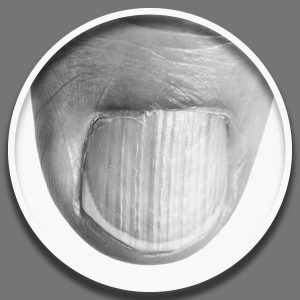 NFPT image
NFPT image
Note: If cutaneous signs of malnutrition appear, those deficiencies may have been growing for weeks (water-soluble vitamins) to months for fat-soluble vitamins and vitamin B12. A B12 deficiency may be suggested by brown-gray discoloration of the nails.
Discoloration may also be linked to a biotin (Vitamin B-7) deficiency. If a client’s Vitamin C level is inadequate, red spots or vertical lines may appear in 1 or more fingernail beds, known as splinter hemorrhage. Iron deficiency may lead to vertically-split fingernails.
Nail appearances can relate to another factor than nutrition. Be aware of rough edges and short nails, perhaps bitten ones, that could suggest a client is in mental distress or experiencing anxiety.
Arthritis
The Greek word arthron means joint. In Middle English, the word arthritis evolved to represent joint inflammation. Pain results when cartilage (which is a part of the body that does not regenerate) thins and wears down. Though osteoarthritis (OA) is more common in older clients, young clients may prematurely experience OA from sports, work injuries, or misaligned joints. Arthritic hand conditions are often observed near the wrists, the basilar joint connecting the thumb to the wrist, fingertips, and finger knuckles.
Here is a cautionary catch-22 when working with arthritic clients… Overloading the wrist or hand joints may advance OA symptoms over time. Yet physical motion as lotion can prevent, and/or improve many arthritic conditions.
The Arthritis Foundation states, “In fact, exercise is considered the most effective, non-drug treatment for reducing pain and improving movement in patients with osteoarthritis.”
Hand Cysts
Ganglion cysts are fluid-filled lumps that may occur near joints. These lumps are more common among athletes, like gymnasts, between 15–40 years of age. For some reason, women may experience them more than men. Some of these cysts, which could be pea-sized or as big as a golf ball, may endure for a few months. The exact causes of ganglion cyst formation are unknown. But if they are not painful and do not interfere with activity, medical intervention may be avoided as many disappear on their own.
Pops or Cracks?
With multiple “belt and pulley” demands, wrist sprains and bone fractures are notable trauma injuries. One NIH report from 2017 macro-data stated that hand and wrist fractures occur in about 2 per 1,000 individuals annually. That is about 700,000 hand or wrist fractures in the USA each year.
The Hand and Wrist Institute advises that sprains and fractures may be hard to differentiate for sufferers and first responders.
“Swelling in the wrist, bruising, pain when moving, and weakness are all present in both injuries…both fractures and sprains are associated with sharp pain during movement and dull pain when stable…of the eight small (carpal) in each wrist – the most commonly fractured is the scaphoid, which rarely causes any noticeable wrist crookedness. To this end, these fractures are often misdiagnosed as wrist sprains…Only a medical provider can make a definitive diagnosis and set the proper treatment path.”
This Institute does advise of these probable differences between ligament strains/sprains and bone breaks:
- Though painful, a strained or sprained extremity can maintain its normal range of motion
- Wrist sprains are signaled by a “popping” noise.
- Fractures are often accompanied by a crack, and movement after the injury may make a small grinding or crunching sound.
Persistence or pain, ROM limits, or swelling for about 2 days means that it is time to visit an MD.
Motion Can be Lotion
This platitude is an underlying truth for the many subsystems in the human hands and wrists. Further, grip strength is now considered to be “an indispensable biomarker.” A 2019 paper in the Clinical Interventions in Aging states, “…patients with weak grip strength more likely to be admitted to the hospital, they are more likely to experience complications while there. ”
COVID patients who had strong grip strength were far less likely to go to the ICU or to die. Yes, a stronger grip means a lower risk of cardiovascular disease!
Strength and stretching/flexibility exercises for hands and wrists abound. CPTs should assuredly include tailored hand, wrist, and forearm exercises in their clients’ workout periodizations. Hand, wrist, and forearm exercises are so important that clients can and should perform them daily.
What is a strong grip? Age- and gender-dependent measures should be factored into CPT assessments at regular intervals:
Dynamometer makers provide weak, normal, and strong values of grip strength for age-bracketed women and men:
- A middle-aged woman (40 y/o) should pinch the dynamometer to a maximum impulse of 33 kilograms to have a strong grip.
- A middle-aged man (40 y/o) should pinch the dynamometer to a maximum impulse of 55 kilograms to have a strong grip.
A wrist stretch in the sagittal body plane, as pictured here, is a quick dynamic warmup for activities like weightlifting, rowing, tennis, and golf that place demands on those many muscles, bones, tendons, and ligaments of the hands and wrists. Stretching the hand and wrist in all three body planes is encouraged.
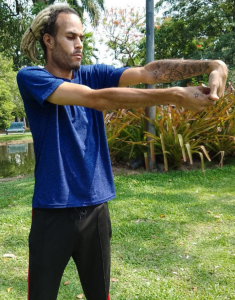
Getting a Grip
This image shows four affordable tools that help clients and CPTS maintain their grip and hand strength. The hand-held dynamometer is an invaluable tool for measuring hand and grip strength. Clients appreciate the firm and strong handshake of CPTs, when contact is permissible!
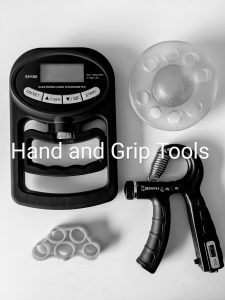
The circular rubber device with finger holes and a central ball is wonderful for both the flexion and extension of fingers which contribute to grip strength. Again, the muscle rotations with this tool should be done in up and down, side-to-side, and twisting planes of motion.
The smaller “pinch grip” strength device at lower right of the image is portable for gym, home, and travel usage. Likewise, the small, five-circle rubber device at the lower left is a simple extensor for finger motion as lotion. Rest assured that these simple devices do matter!
NFPT Image, David Frost
Bodyweight Exercises
When clients are assessed as ready for “built-in” hand and forearm challenges, fingertip push-ups, pull-ups or chin-ups holding a towel, and progressive work with heavier weights contribute to general hand, wrist, and forearm capacity and strength. A client is only as functionally strong as her or his weakest link. Strong hands and wrists can be valuable assets as links for many kinetic exercises and ADLs.
Opening a jar, lifting a heavy suitcase, climbing a rock wall and enduring hangs from a pullup bar are just some activities for which superior grip means superior results.
Summary for Healthy Hands
Frequent hand/wrist pain should not be ignored. Even occasional pain can be a symptom of a serious cause. Be on alert if a client has:
- a current or recent injury
- has done excessively repetitive tasks
- used poor hand positions for common tasks
- tendinitis in the wrist, hands or fingers may have evolved
Ignoring the inflamed symptom may make it worse. A client could lose the ability to perform everyday tasks.
Though nail changes accompany many conditions, these changes are rarely a first sign. And many nail abnormalities are harmless — not everyone with white nails has hepatitis. When a question arises, encourage a client to see a doctor or a dermatologist.
A client’s top way to avoid OA, and/or to live with OA is to ensure proper nutrition for strong bones; pursue relatively slow, gentle movements; and optimize low-impact exercises.
With strong tiny hand and forearm muscles, plus supple and lengthened connective tissues, a client can safely perform demanding tasks and exercises. Getting a grip on a pullup bar, heavy barbell, or hand-held dynamometer is a very strong and flexible effort for general fitness.


